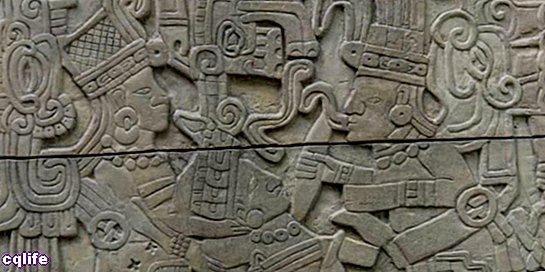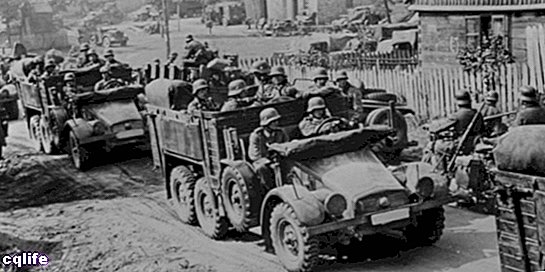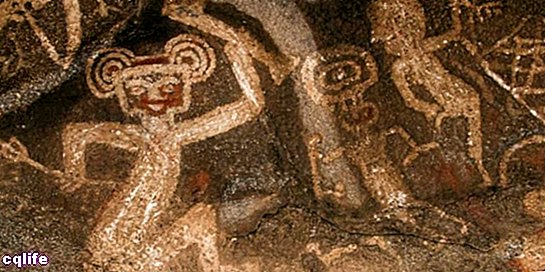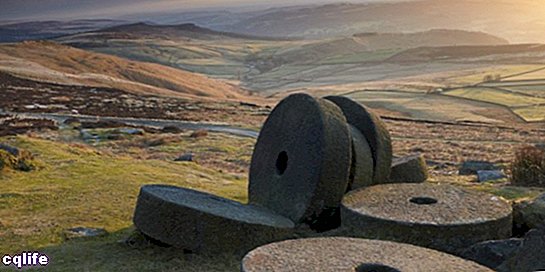- What is history
- Story characteristics
- What is history for?
- Importance of history
- History and prehistory
- Periods of history
- Division of prehistory
- History division
- Auxiliary sciences of history
We explain what history is, how it is divided, its functions and characteristics. In addition, its auxiliary sciences and what is prehistory.

What is history
History is the study of the past of the humanity from the critical examination of records, documents, Photographs, films, books and any other form of support that sheds light on past events that affected countries and communities.
However, history can mean three different things:
- A discipline that studies the past of humanity and its chronological narration, allowing its understanding, contextualization and critical vision. It is what we think of when we buy a history book. Sometimes it is framed in social Sciences and others among the Humanities.
- The production of said study, that is, the very writing of the past carried out by chroniclers and historians. In other words, the writing of history is also history.
- The time period beginning with the invention of writing in the Antiquity and continues to the present. It is a disused concept, but in principle it was opposed to the prehistory, that is, the history before writing.
In addition, we popularly use the term "history" to refer to the past, as in the expression: "that is already history" or "that will remain for history."
History is one of the oldest disciplines created by humanity, and perhaps one of the most possible specializations. A historical approach can be made of practically any reality, even from other Sciences and disciplines, whether we talk about art, of a nation or of universe same.
People who are dedicated to the study of history are known as historians, and those who are concerned with telling the history of a locality or a community are known as chroniclers.
Story characteristics
In general terms, the story is characterized by the following:
- It is dedicated to the study of the past, based on the different types of records that have remained of it, or that have been prepared by previous historians. Hence, the knowledge History is cumulative, that is, what is studied by a historian serves as a source for future historians.
- The study of history specializes in a topic, topic, or region specific, so that it is possible to talk about the history of practically everything. It should not be confused with historiography, which is the study of the way in which history is written, that is, a kind of meta-history.
- To study the past, history turns to many other disciplines in search of sources and instruments, and at the same time it serves as an auxiliary science so that they can study the origins of their field of study and the development of themselves as disciplines. For example: history of medicine, history of science, history of literature.
- Since the 19th century the teaching of national history is an essential part of the educational model in all countries, as a method of training the National identity.
What is history for?

The review or study of the past fulfills different functions, which can range from the accumulation of knowledge itself, to the understanding of the present.
The latter is perhaps its greatest utility: only by studying how things happened in the past, we can understand the configuration of current reality. That is why many times the past (remote or recent) is the starting point of the study of a topic.
Importance of history
Said a bit romantically, the importance of the story has to do with the human desire to conquer death: we write what happened so that future generations can find out what happened, when we are no longer present to tell it.
Thanks to this we can know what life was like thousands of years ago, what were the concerns, discoveries and dangers faced by those who lived in a world radically different from ours, since without them we would not be who we are.
History and prehistory

The differentiation between history and prehistory is conventional, and is currently considered unnecessary. Prehistory is necessarily part of human history, but it was traditionally understood as the primeval and ancestral period.
That is, prehistory is the period prior to the invention of writing. From this event, instead, we would find ourselves on the grounds of history proper.
This division had to do with the fact that, until the invention of writing, there was no durable physical medium on which to store or relate the events that occurred, but rather that the past was transmitted from generation to generation, often through the use of the memory and techniques such as rhyme, to be able to evoke it.
The trouble Inherent in this is that, with each repetition, the message alters a little, to the extent that one word is forgotten and another comes to replace it, or that the message is remembered slightly differently from what the predecessor remembered it. That is why prehistory is much more difficult to know than history.
Periods of history
Part of the work of students of history is to organize and classify it, which is often done through its periodization, that is, its division into consecutive periods, the beginning and end of which are marked by certain important dates and events.
Thus, “traditional” periodization is organized according to European parameters, from which others differ. continents Y culturesTherefore, there is no single and universal periodization, but the model that we will see below must always be adapted to the particularities of each region and culture.
Next, the division of periods of Prehistory and of History.
Division of prehistory

As we have said, it is the most primitive and oldest period in the trajectory of our species. It comprises two different stages, which are:
- Stone age. That which goes from the appearance of the first forms of human tools, made of stone, wood or bone, until the discovery of the handling of the first metals. It is the longest age, subdivided into three different periods:
- Paleolithic period. Ever called ancient stone age, It goes from 2.59 million years ago approximately, until the year 12,000 a. He witnessed the emergence of the first physically recognizable human hordes, of primitive social behavior, who discovered fire, the use of lithic tools, and survived on the basis of hunting, fishing and gathering.
- Mesolithic period. Also known as epipaleolithic or protoneolithic, it is considered a period of transition from nomadic to sedentary life, which also coincided with the end of the last ice age. It is considered that it goes from the year 12,000 a. C. until 9,000 a. C. in the Middle East, since in Europe its climactic events did not come until much later.
- Neolithic period. The last period of the Stone Age, includes the period from the year 9,000 a. C. approximately, until 4,000 a. C., in which the first true revolution in human history took place, with the development of the farming. Is technique revolutionized the human way of life, making us a sedentary species, and then allowed the domestication of vegetable species Y animals.
- Age of metals. As the name implies, this is the era when metals were discovered by mankind. It is normally divided into three different ages, according to the predominant type of metal:
- Copper age or Chalcolithic. Of diffuse limits between the year 4,000 a. C. and 3,000 a. C., it was when the copper and it was used in its native state, by hammering and chilling, until the possibility of melting it was discovered. Pottery and the first alloys.
- Bronze age. This period begins around the year 3,000 BC. C. and culminates more or less in 1,300 a. C., and it was when bronze was known, a much more widely and versatile metal used by ancient humanity, not only to make weapons and utensils, but also statues and monuments.
- Iron age. The last of the prehistoric periods, in which the first writing protosystems were already taking place. In addition, humanity discovered a much more valuable and durable metal than copper, with more interesting properties, but much rarer: iron. It is dated approximately between the year 1,300 a. C. and the appearance of writing, which in Europe occurred around the year 500 a. C., although it was known in the Middle East from 3,300 a. C.
History division

History, properly speaking, dates from the development of writing and the appearance of the first state, until the present. It is traditionally divided into several ages, which are:
- Old age o Antiquity. It is the period of emergence of the first ancient civilizations, usually in the form of an Empire or a religious monarchy. It is understood in three different stages:
- The birth of civilization. Especially from cultures Mesopotamian (Sumeria, Babylon, Assyria), from Ancient Egypt, from the eastern Mediterranean (Phenicia and Ancient Israel), which had little contact with the Indus Valley civilization, Chinese civilization, civilization mesoamerican and the Africa Saharan, considered cradles of humanity.
- Classical Antiquity. Dated between the VIII centuries a. C. and II d. C., the classical period witnessed the emergence of the expansive cultures of Persia, Phenicia, Ancient Greece and later Rome, which disputed the Mediterranean and its surrounding regions. During this period the Roman Empire was built and matured, the first great power imperialism of Europe, and culminates in its entry into decline.
- Late Antiquity. It focuses on the decline of the Roman Empire from the 3rd century AD. C., and its fall in front of the barbarian invasions that come from the Germanic North European. In addition, they witness the rise of the great monotheisms: the Islam and Christianity.
- The Middle Ages or the Middle Ages. It is the period of Christianization of the entire West, after the fall of the Western Roman Empire and the development of a new Mode of production, the feudalism. The aristocracy was the ruling class and the West plunged into obscurantism, throughout fifteen centuries of religious rule (from the 5th to the 15th century). It is also classified in two stages:
- High Middle Ages. From the 5th to the 10th century, it is the so-called dark age, in which letters are scarce, urban life suffers a significant setback and life in Europe occurs in abbeys, castles and villages almost cut off from each other.
- Middle Ages. From the 10th to the 15th century, an urban revolution took place as a result of the increase in commercial activity and the rise of a new social class, the bourgeoisie. The crusades are produced, the result of competition between the Islam and the Catholic Church, and towards the end the so-called Old Regime is formed: an absolutist monarchical society.
- The Modern age. From the 15th century, with the discovery of America and the fall of Constantinople and the Eastern Roman Empire, the world was plunged into change. Europe was reborn under the influence of a thriving new philosophy: the humanism, which supplants faith in God with human reason, and lays the foundation for a scientific revolution That changed the world forever
This age is the Age of Discovery, in which the great European empires explore the world. Thus a stage of colonization and imperialism, which culminated in the 18th century with the Illustration, the fall of the Old Regime and the beginning of the republican and capitalist world. - The Contemporary age. The period that spans from the 19th century to today has been an age of scientific, social and political revolutions, which transformed the world in a much more radical way than the rest of all of history.
Science and technology showed their dark side: the first atomic bombs; and also its prodigious side: the arrival of the human being to the Moon. Towards the 21st century the capitalism global, victorious and without enemies, faces its first crises.
Auxiliary sciences of history
The auxiliary sciences of history are those that collaborate with it in the interpretation of its documentary sources. Examples of them are:
- The archeology. Which brings new discoveries and new contexts from which to think about the past.
- The ethnography. That provides useful anthropological and sociological data to use the present as a reference to the past.
- The astronomy. Using the astral order as a reference, it allows us to understand the cosmological organization of ancient cultures, many of which had their own calendars.
